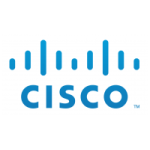ADMINISTERING UNIFIED CONTACT CENTER ENTERPRISE WITH CVP PART 2 (AUCCE2)
Course Overview
Administering Cisco Unified Contact Center Enterprise Part 2 (AUCCE Part 2) is an Advanced 5 day instructor-led course for system engineers and customers who will be involved with day 2 support of a UCCE solution deployed in a CVP comprehensive environment. This course gives the learner an understanding of the requirements, resources and tools required to perform complex adds, moves and changes in the inbound/outbound UCCE environment. This course is intended for those performing advanced administration of the solution, or who may be responsible for Level 2-3 support of the solution. The AUCCE Part 1 course or equivalent prior experience is a prerequisite for attending this course. This course is also a good companion course to the DUCCE course which covers more detail on the installation/maintenance of the solution. The overall goal of this course is advanced administration of the solution by a deeper exposure into the technical operational requirements and the tools used to configure and ensure functionality. Do Not take this course if you are new to CCE, you will not have a good time. If you are already working with CCE, or if you’ve taken the Part 1 course, you’ll love this course! Upon completing this course, the learner will be able to meet these overall objectives: Demonstrate advanced proficiency with add/move/change of the ACD/PBX (agent/skill) environment of UCCE. Demonstrate advanced proficiency with add/move/change of the IVR (prompt/collect) environment of UCCE including both MicroApp and VXML solution scripting (ICM Scripting and Call Studio scripting). Demonstrate effective use of system tools to track and troubleshoot a call within a call flow.

Course Objectives
Course Prequisites
Target Audience
Managers, team-leads, business liaison personnel or anyone who needs to be remotely involved in the UCCE solution and have a better overall understanding of its function.
Course Outline
Module 1: Cisco Unified Contact Center Enterprise v10 Foundations Lesson 1: Introducing UCCE Lesson 2: Unified CCE Architecture and Components Lesson 3: UCCE Terms, Routing and Additional Components Lesson 4: Accessing UCCE Tools Module 2: CCE Configuration and Scripting Review Lesson 1: Configuration Manager and Script Editor Review Lesson 2: CTI Review Lesson 3: Agent Skill Review Lesson 4: Microapps and Media File Review Lesson 5: Precision Routing Review Lesson 6: Transfers and RONA Review Lesson 7: Mobile Agents Module 3: Implementing Business Rules Lesson 1: Advanced Scripting and Routing Lesson 2: ICM Scripting Variables, Expressions, Formulae and Functions Lesson 3: Creating and Admin Script for Time of Day Routing Lesson 4: Creating Feature Control Sets and Users Module 4: CCE VXML Solution Lesson 1: Basic VXML Functionality Lesson 2: Installing and Configuring VXML solution Lesson 3: Basic VXML – SQL Database Lookup Lesson 4: Exploring Courtesy Callback Lesson 5: Agent Greeting Module 5: CCE Outbound Lesson 1: Introduction to Outbound Option Lesson 2: Configuring Outbound Option for Agent and IVR Campaigns Module 6: CCE Support considerations Lesson 1: Supporting UCCE Lesson 2: Diagnostic Framework Suite Lesson 3: UCCE Support Lesson 4: Tracking an Agent call through the Database Lab Outline Lab 1-1: Check out the Lab Environment Lab 1-2: Explore Voice Gateway Lab 1-3: Explore CVP and ICM Servers Lab 2-1: Administering ICM Dialed Numbers and Call Types Lab 2-2: Media Files and Variables in ICM Scripting Lab 2-3: Basic IVR Scripting with MicroApps Lab 2-4: Configure ICM for basic Agent and Skill Group Functionality Lab 2-5: Configure UCM for Agent Functionality Lab 2-6: Install CTIOS Agent Desktop(Optional) Lab 2-7: Scripting for Skill Groups and Queuing Lab 2-8: Configuring Precision Routing Lab 2-9: RONA Lab 2-10: CTI Route Point Initiated Calls Lab 2-11: Agent initiated transfers into UCCE using the ICM Dialed Number Plan Lab 2-12: Configure Calls using SIP with Proxy Lab 3-1: Administrative Scripting Lab 3-2: Feature Control Sets and Users Lab 4-1: VXML Server Configuration and Call Studio Installation Lab 4-2: Create and Deploy a Basic Call Studio Project Lab 4-3: Integrate VXML Applications with ICM Script Lab 4-4: SQL DB Lookup Functionality for VXML Lab 4-5: Courtesy Callback Lab 4-6: Agent Greeting Lab 5-1: Configure SIP Outbound Dialer Basic Agent Campaign Lab 5-2: Challenge Lab: Build IVR campaign Lab 6-1: Using Troubleshooting Tools Lab 6-2: Track a call thru RCD and TCD Lab 6-3: Instructor generated Break/Fix lab.
What Our Students Have to Say


